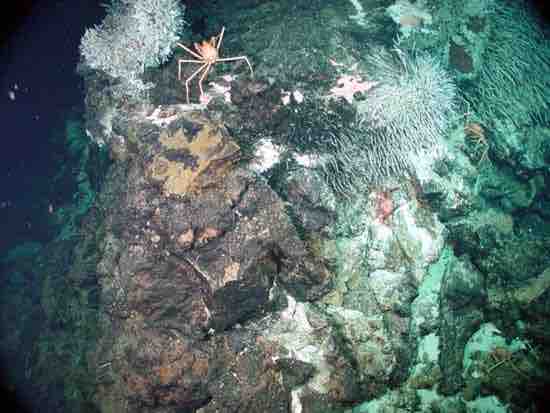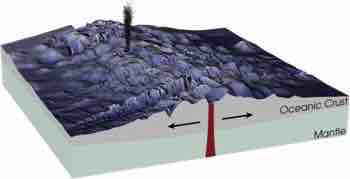Microorganisms, by their omnipresence, impact the entire biosphere. Microbial life plays a primary role in regulating biogeochemical systems in virtually all of our planet's environments, including some of the most extreme, from frozen environments and acidic lakes, to hydrothermal vents at the bottom of deepest oceans, and some of the most familiar, such as the human small intestine.
Microbes, especially bacteria, often engage in symbiotic relationships (either positive or negative) with other organisms, and these relationships affect the ecosystem. One example of these fundamental symbioses are chloroplasts, which allow eukaryotes to conduct photosynthesis. Chloroplasts are considered to be endosymbiotic cyanobacteria, a group of bacteria that are thought to be the origins of aerobic photosynthesis.
They are the backbone of all ecosystems, but even more so in the zones where light cannot approach and therefore photosynthesis cannot be the basic means to collect energy. In such zones, chemosynthetic microbes provide energy and carbon to the other organisms. Other microbes are decomposers, with the ability to recycle nutrients from other organisms' waste poducts. These microbes play a vital role in biogeochemical cycles. The nitrogen cycle, the phosphorus cycle and the carbon cycle all depend on microorganisms in one way or another. For example, nitrogen which makes up 78% of the planet's atmosphere is "indigestible" for most organisms, and the flow of nitrogen into the biosphere depends on a microbial process called fixation.
Recently there has been the discovery of abundant marine life in the deep sea, especially around hydrothermal vents. Large deep sea communities of marine life have been discovered around black and white smokers – hydrothermal vents emitting typical chemicals toxic to humans and most of the vertebrates. This marine life receives its energy from both the extreme temperature difference (typically a drop of 150 degrees) and from chemosynthesis by bacteria.
Brine pools are another seabed feature, usually connected to cold seeps. Hydrothermal vents along the mid-ocean ridge spreading centers act as oases, as do their opposites, cold seeps. Such places support unique biomes and many new microbes and other lifeforms have been discovered at these locations . The deepest recorded oceanic trench measured to date is the Mariana Trench, near the Philippines, in the Pacific Ocean at 10,924 m (35,838 ft). At such depths, water pressure is extreme. There is no sunlight, but some life still exists. A white flatfish, a shrimp, and a jellyfish were seen by the American crew of the bathyscaphe Trieste when it dove to the bottom in 1960. Marine life also flourishes around seamounts that rise from the depths, where fish and other sea life congregate to spawn and feed.

Zooarium chimney provides a habitat for vent biota.

Oceanic ridge with deep sea vent
Oceanic ridge with deep sea vent.